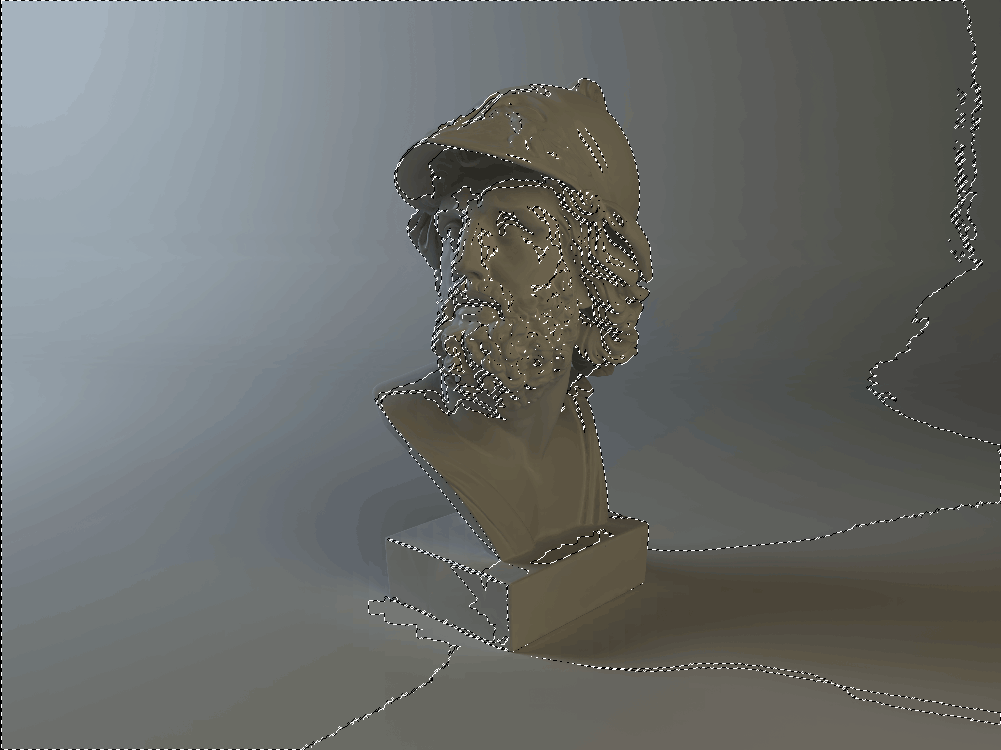"gif. jpg. png. tif. (gjpt)," an exhibition currently on display at HEREart , explores the relationship between standardized digital image formats and visual representation. Curated by Jess Ramsay and featuring work by Jason Huff, Jordan Tate and Adam Tindale, Seyhan Musaoglu, and Giselle Zatonyl, the exhibition demonstrates how fully digital imaging has permeated visual culture. The works in the exhibition approach the pixel as a key structural component of visual representation, manipulating it to expose the formal characteristics of digital media.

Jordan Tate and Adam Tindale consider the anatomy and equation of the pixel in relation to the representational nature of photography. In Lossless, Tate and Tindale reorder a photograph using Processing and a custom QuickSort algorithm by assembling pixels into JPG domain (alphabetically), where each pixel is a representation of specific values of color, brightness, and saturation. An image of two gentlemen getting into an automobile is rendered unrecognizable, but the resulting abstraction remains an accurate representation of its original pixels. For Tate and Tindale, the process and underlying structure of the image is the subject of the work. The image is now a representation of visualized data rather than a reproduction of reality. By reorganizing the photograph, they reveal the underlying composition of the image, making the pixels discernible.

Tate continues to explore the physicality of pixels and the process of digital image production in the animated gif New Work # 50, where a photograph of a statue is given renewed tangibility with the Photoshop selection tool. As the ants dance around the selected pixels, the materiality of the three-dimensional object being depicted is contrasted with the equation of digital pixels used for its reproduction.

Seyhan Musaoglu's series GrandLife – the coolest cat, also explores the structural components of digital images. Using images found on Facebook or through Google image search, Musaoglu’s work visually articulates the processes of remix and sampling. The original ordered pixels make a journey through image degradation, re-enhancement, Photoshop manipulation and finally into physical printouts. The resulting photographs highlight the inherent difference between digital images and physical photographs, while revealing the intrinsic structure of the specific file formats. The images have gone from the real to digital back to the real again in what seems to be a perpetual loop of transference.

This relationship between the physical object and digital image representation is also a central theme in Jason Huff's work. In The Story of Art all the images in E. H. Gombrich's art history textbook The Story of Art are replaced with "broken image link" icons. The broken link icon, immediately recognizable and understood, transcends its context and hoists the limitations and characteristics of the internet onto the physical object. The absurdity of broken image links in a real book contrasts the fluidity and transience of digital representation on the internet with the static physicality of a tangible book. What we accept in one format is utterly unacceptable in another. As such, formats are considered as distinct media with innate properties of their own. The structure and functioning of each format is considered inseparable from their representational content. In Giselle Zatonyl's work Exorcise Willow, a clip from The Exorcist is mixed with Willow Smith's girl anthem "I Whip My Hair." While the manipulability of the digital media format enables flexible remix and creative juxtapositions, it brings its own limitations and characteristics, apparent in the ample glitches and artifacting evident during the forty-five second video. The semantics of the song’s appeal to “whip your hair” are echoed in the action of Linda Blair demonically seizing and thus, “whipping” her hair.
In our age of ubiquitous imaging, standardized formats have taken on personality and physicality. The artists in ".gif .jpg .png .tif." have used the structure of these formats to express the depth with which they have influenced representation in our digital culture.

